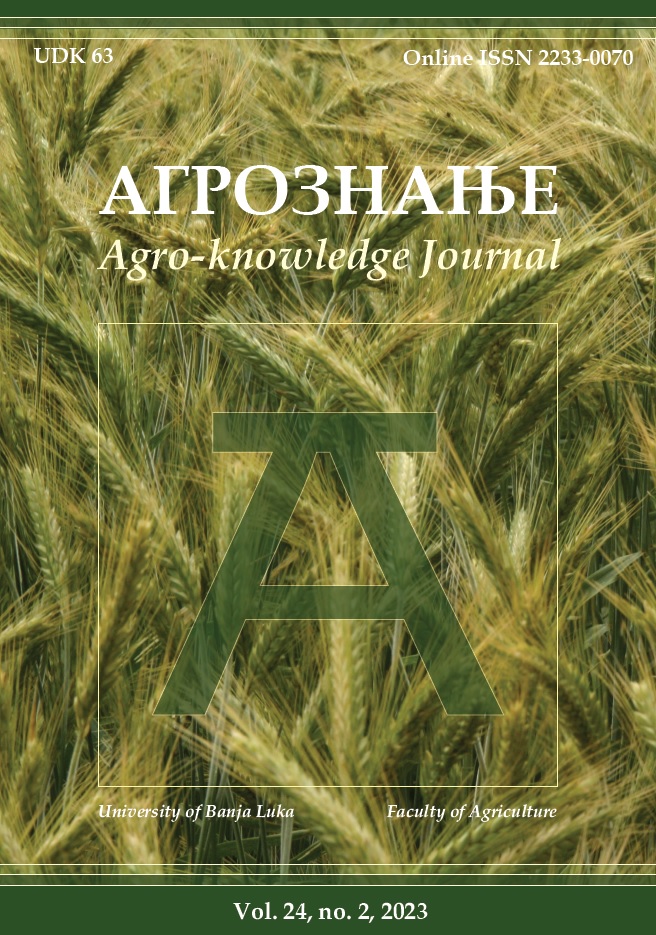Characteristics of red wines depending on the applied maceration method
DOI:
https://doi.org/10.7251/AGREN2302055JCAbstract
Wine is an alcoholic beverage created as a product of alcoholic fermentation. It is a complex compound consisting of a large number of components (water, alcohols, acids, sugars, mineral substances, phenols, esters, glycerol, etc.). The chemical composition and quality of wine largely depend on the variety, wine type, production, and storage methods. Maceration is an essential part of the red wine production process. During maceration, numerous compounds are separated from the solid parts of the grape and berry and they are extracted into wine, and thanks to this process, red wine acquires most of its characteristics. It is considered that temperature and duration are the most important maceration factors that affect the quality of red wines. This paper aims to determine the influence of different maceration regimes on the quality of red wines of the Vranac and Merlot varieties. Vinification was carried out in 2021 in the Microbiology Laboratory of the Faculty of Technology in Banja Luka, where maceration regimes for 6 and 12 days were applied, at temperatures of 16 and 25°C. Wine quality analyses were done in the Laboratory for Ampelography and Winemaking at the Faculty of Agriculture in Banja Luka. Differences in wine quality were observed depending on the maceration regime. The highest alcohol content was observed after 6 days of maceration at 25°C, while prolonged maceration led to reduction in the alcohol content. The increased temperature had a positive effect on the total extract, as well as on the wine chromatic characteristics of both varieties. The wines of the Merlot variety had lower total acidity at longer maceration, while the wines of the Vranac variety had lower total acidity at shorter maceration. All analyzed wines had a satisfactorily low volatile acidity, as well as pH. The Merlot wines had the highest ash content after 12 days of maceration at 25°C, and the Vranac wines after 6 days of maceration at 25°C.

